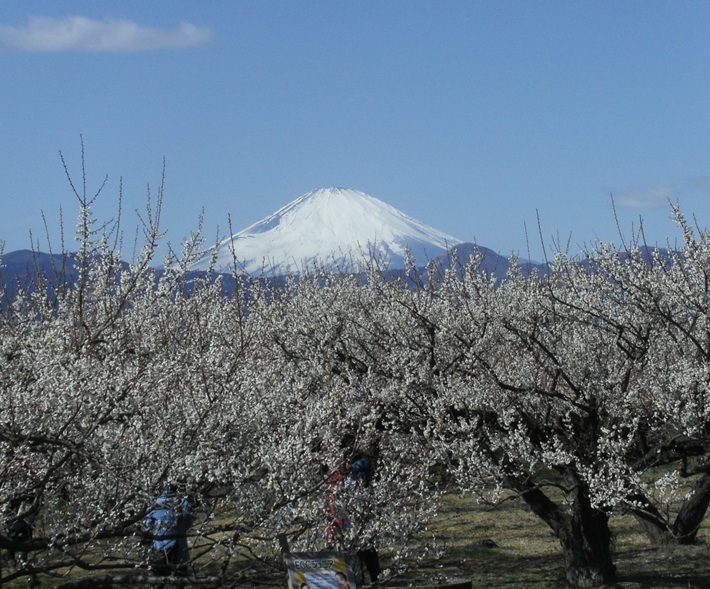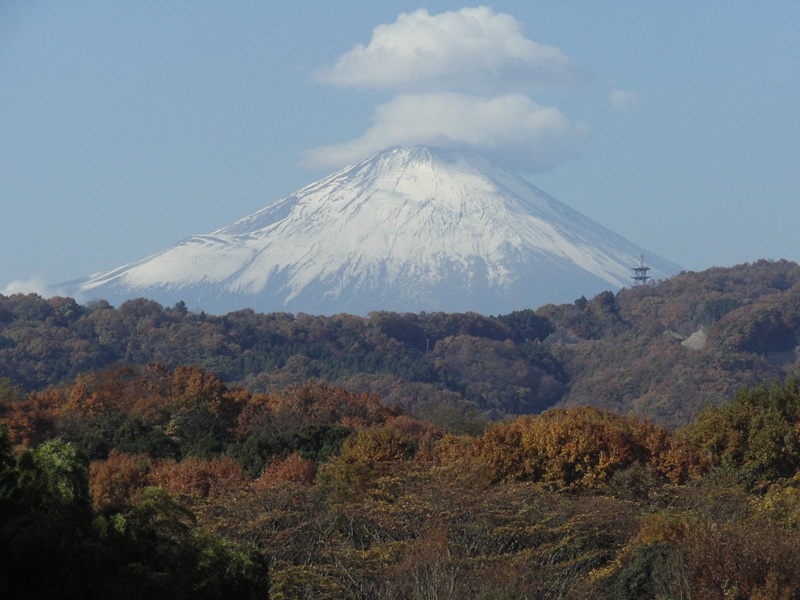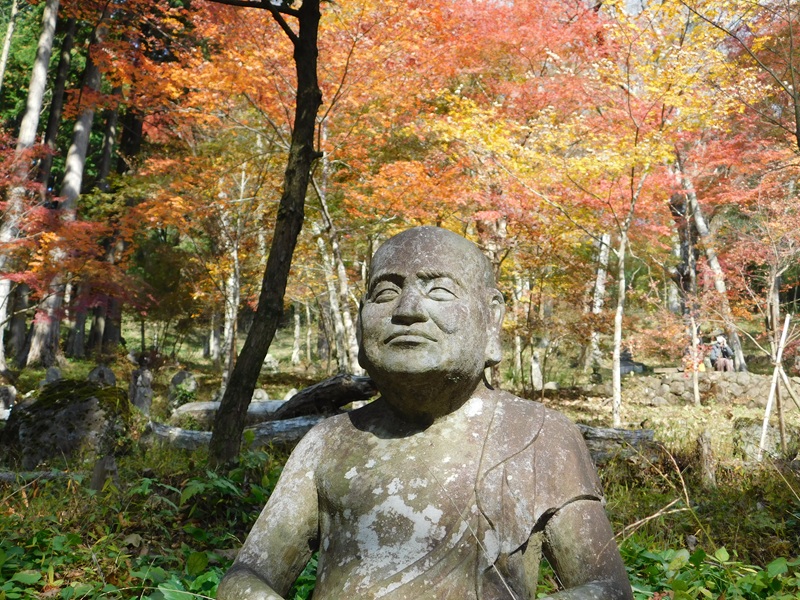This is purely my personal opinion. I am Japanese, but I am not an expert on Japanese religions. so I might unintentionally say something that could be perceived as an attack on a specific religion, but that is not my intention.
I was not interested in religion and thought I did not believe in any religion. Recently, I have studied Japanese religions and my thoughts have changed. This is an analysis of Japanese religious views based on the results and my personal experiences.
When searching for information on Japanese religions, various statistical results can be found. Personally, this survey results are closest to the Japanese sense that I see and hear.
https://www.nhk.or.jp/bunken-blog/500/367473.html
This is the result of a 2018 survey. 31% of respondents identified as Buddhists, 3% as Shintoists, and 36% said they followed some form of religion. Most people claim not to follow any religion, but is that really the case?
In conclusion, the core belief of Japanese people is Shinto, with the understanding that ‘gods grant wishes’ and that ‘if gods are not treated with respect, they will bring misfortune.’ While the former belief is taken with a grain of salt, the latter is taken more seriously by many.
Buddhism, on the other hand, deals with the afterlife and addressing life’s troubles. However, many aspects of Buddhism are treated similarly to Shinto gods. This is likely a remnant of historical attempts to equate gods and Buddhas when Buddhism was first introduced to Japan.
Confucianism forms the basis of morality, complementing the lack of strict rules in Shinto and Buddhism. (Buddhism has precepts, but in the case of Japan, the way these precepts are perceived seems to have changed.)It clearly defines what must be done, making it easy to understand. It is believed that the ruling class used Confucianism for governance, especially during the Edo period, and it permeated society. However, the presence of Confucianism is now less recognized among Japanese people. I, too, was unaware of its existence.
With that said, I will delve deeper into Shinto, Buddhism, and Confucianism.
I would like to explain this point by incorporating my own views along with the answer I received from ChatGPT.
I will add this.I am not an expert in this field. I am an ordinary Japanese person.
Confucianism
First, let’s talk about Confucianism.This is an answer I got from ChatGPT
Confucianism, founded by Confucius in the 6th-5th century BCE, is a philosophical and ethical system that has profoundly influenced East Asian cultures, including Japan. Although it is not a religion in the traditional sense, it emphasizes moral values, social harmony, and respect for hierarchy and family.
In Japan, Confucianism has played a significant role in shaping societal norms and values. During the Edo period (1603-1868), Confucianism, particularly the Neo-Confucianism of Zhu Xi, was promoted by the Tokugawa shogunate as the official ideology. This period saw the integration of Confucian principles into the education system, governance, and daily life.
Key aspects of Confucianism that have influenced Japanese society include:
- Education: Confucianism places a high value on education and the cultivation of virtue. This emphasis is reflected in the Japanese education system, where academic achievement and respect for teachers are highly valued.
- Family and Social Hierarchy: Confucianism stresses the importance of family bonds, filial piety, and respect for elders. These values are evident in the Japanese practice of caring for elderly family members and the hierarchical structure of social relationships.
- Work Ethic: The Confucian work ethic, which emphasizes diligence, loyalty, and dedication, is mirrored in the Japanese approach to work. Japanese employees are known for their strong sense of responsibility and commitment to their employers.
- Government and Leadership: Confucian ideals of benevolent leadership and moral governance have influenced Japanese political thought. Ethical leadership and the welfare of the people are key expectations placed on government officials and leaders.
- Social Harmony: Confucianism promotes social harmony and the importance of maintaining harmonious relationships within society. This value is evident in the Japanese cultural emphasis on politeness, conflict avoidance, and group harmony over individual interests.
This is the answer from ChatGPT up to this point.
Currently, in Japan, Confucianism is not taught in schools or other institutions in its traditional form, but its influence remains in modern times. Additionally, Confucianism (particularly Zhu Xi’s Neo-Confucianism) was strongly promoted during the Edo period. It is an interesting topic to explore how Confucianism has been treated in Japan since then, and I plan to investigate it gradually.

Shinto
Here, I will discuss my thoughts on Shinto and also address State Shinto.
Shinto
Shinto, often referred to as “the way of the gods,” is the indigenous spirituality of Japan. It is characterized by the worship of kami, which are spirits or deities associated with natural elements, ancestors, and sacred places. Shinto practices involve rituals, festivals, and ceremonies that honor these kami and seek to maintain harmony between humans and nature. Unlike many other religions, Shinto does not have a founder, sacred scriptures, or a formalized doctrine. Instead, it is deeply rooted in Japanese culture and traditions, influencing various aspects of daily life and societal values.
This concludes the answer from ChatGPT, but Shinto seems to be a vague concept. Currently, Japanese people perceive that various gods are enshrined in Shinto shrines, each responsible for different blessings, and they choose which shrine to visit based on their wishes. Most people do not understand what Shinto is, so they do not consider themselves followers, but they still visit shrines. However, those who participate in local shrine festivals and carry mikoshi (portable shrines) likely consider themselves Shinto followers. Additionally, there is an intuitive belief in the existence of many Shinto gods, which means Yaoyorozunokami (the belief in the eight million gods) is widely accepted. I also believe in Shinto, even though I don’t fully understand it.
It seems contradictory to make wishes to gods at shrines if one does not believe in them, so I think those who visit shrines for New Year’s prayers or to pray for success in entrance exams can be considered Shinto followers. Personally, I find it difficult to understand explanations about Shinto. I think Shinto is more intuitive and sensory rather than something that can be easily verbalized.
While maintaining this vague feeling towards Shinto, I supplement the need for theoretical explanations of religious elements with Buddhism. I do not use Buddhism to explain Shinto, but rather as a separate tool for mental health. I find Buddhism to be logically sound and easy to understand, which makes it easier to gain reassurance through self-suggestion. Especially the various sects that emerged after the Kamakura period are approachable.
I really like the balance between Shinto and Buddhism. However, I feel that most Japanese people misunderstand Buddhism more than Shinto. I will explain this further in the Buddhism section.
State Shinto
State Shinto was a government-endorsed form of Shinto practiced in Japan from the Meiji period until the end of World War II. It emphasized the divine status of the Emperor and promoted national unity and loyalty. State Shinto integrated Shinto rituals into state functions and public life, and it was taught in schools to instill patriotism. After World War II, State Shinto was abolished, and Shinto was separated from the state.
This concludes the explanation of State Shinto by ChatGPT.
The Meiji Restoration and Post-War Period
Regarding the background of the establishment of State Shinto, I personally believe that the following two factors had a significant impact.
- Background of the Clans Leading the Meiji Restoration: The central clans that promoted the Meiji Restoration (Satsuma and Choshu clans) were defeated in the Battle of Sekigahara in 1600 and were treated unfavorably during the subsequent Edo period. They needed to use the Emperor’s authority to overthrow the Tokugawa shogunate. However, the relationship between the Tokugawa shogunate and the Emperor was not necessarily bad.
- Religious Elements in the Drafting of the Meiji Constitution: The Meiji government, believing that Japan was a backward country, referred to European constitutions when drafting the Meiji Constitution. They recognized the significant role of Christianity in these constitutions. Therefore, they considered it necessary to have an equivalent in Japan, leading to the promotion of State Shinto.
As a result of these factors, State Shinto was formed, and after the defeat in World War II, the general public distanced themselves from State Shinto. Additionally, the distinction between State Shinto and Shinto may have become blurred, leading to a diminished awareness of Shinto’s existence. However, many people still visit shrines for New Year’s prayers or to buy amulets, so I believe it is fair to consider these people as Shinto followers.
Amaterasu Omikami
Amaterasu Omikami is the sun goddess in Japanese mythology and one of the highest deities in Shinto. She governs the heavenly realm of Takamagahara and is considered to bring light and life. Amaterasu Omikami is regarded as the ancestor of the Emperor and symbolizes the sacred origin of the imperial family.
This concludes the explanation of State Shinto by ChatGPT.
I don’t know how many Japanese people are aware of Amaterasu Omikami today, but I think many do not. Before the defeat in World War II, everyone likely knew about her because it was taught in elementary school. Now, although it is still taught in schools, it is not given special emphasis, so people usually forget. I, too, did not remember Amaterasu Omikami until recently. Additionally, I think few people know about the descent of the heavenly grandson (the belief that the Emperor is a descendant of the gods).
Personally, I believe that the relationship between Shinto and the Emperor is crucial for the continuation of Shinto from ancient times to the present. For example, even after the introduction of Buddhism, Shinto did not disappear, largely due to the presence of the Emperor. Furthermore, even when the nobility held power or during the samurai-centered society, the Emperor continued to exist as the nation’s top figure. This itself demonstrates the importance of the Emperor in Japan, and I believe this position will not change in the future.

Buddhism
Buddhism, founded by Shakyamuni in India in the 6th century BCE, explores the causes of suffering and ways to resolve it. Japanese Buddhism was introduced in the 6th century and established as the state religion during the Nara period (710-794). Japanese Buddhism is divided into various sects, with major ones including Jodo, Zen, Shingon, and Tendai. Each of these sects has its own unique doctrines and practices, deeply rooted in Japanese culture and society.
However, the Japanese perception of Buddhism is often limited to funeral Buddhism and treating Buddhist deities like Shinto gods. Many Japanese people may not be interested in or familiar with the actual teachings of Buddhism.
Funeral Buddhism
I believe that the current role of Buddhism in Japan is primarily perceived as “funeral Buddhism.” Funeral Buddhism refers to the form of Buddhism that focuses mainly on ceremonies such as funerals and memorial services. In Japan, Buddhism plays a role in matters related to the afterlife and ancestor worship, and many people conduct Buddhist rituals during funerals. As a result, Buddhism is often recognized as “funeral Buddhism.”
Danka System
The Danka system refers to the relationship between Buddhist temples in Japan and their parishioners (danka). This system involves the temple conducting exclusive funerals and memorial services for the danka in exchange for financial support from the danka.
The Danka system dates back to the Edo period. In 1612, the Tokugawa shogunate introduced the “Terauke system” to ban Christianity. Under this system, all Japanese people were required to belong to a specific temple and obtain a “Terauke certificate” from the temple to prove they were not Christians. This effectively made Buddhism the state religion and strengthened the relationship between temples and danka.
The Danka system functioned by having temples conduct funerals and memorial services for the danka, while the danka provided offerings to the temples. This system supported the economic foundation of the temples while imposing certain religious obligations on the danka.
Even in modern times, the Danka system continues, although the number of danka has decreased due to factors such as declining birth rates and nuclear families. Nevertheless, many people still use the Danka system for ancestor worship and funerals.
Those who identify as Buddhists may often be from families that have inherited the Danka system. In my case, my mother’s family was part of the Danka system, but it ended as there was no one to inherit the family.

Modern Buddhism
Many people in Japan perceive Buddhist deities similarly to Shinto gods, as entities that can grant wishes.
Therefore, there may be few people who are genuinely interested in the original teachings of Buddhism. In the past, under the Danka system, there were more opportunities to hear monks’ teachings and the presence of temples was more familiar, so people might have known more about Buddhist teachings.
Nowadays, such direct opportunities have decreased. However, you can still hear monks’ teachings directly through books and social media. I also learn from various monks and Buddhist practitioners on YouTube.
Given the many sects in Japanese Buddhism, I recommend studying the history of Japanese Buddhism from a broad perspective.( There are few English contents available. )By doing so, you might find teachings that resonate with you across different sects. That’s how it is for me.
In other words, you might find something that is not difficult, easy to understand, and makes sense to you. While studying, I find the stories of Shingon, Zen (Rinzai and Soto), Jodo Shinshu, and historical high priests fascinating.
I recommend this YouTube video about Jodo and Jodo Shinshu.
Zen
Zen is popular overseas, but I think it can be quite elusive.
Zen Buddhism was introduced to Japan from China (where it was known as Chan) in the 12th century. Two major Japanese monks played crucial roles in establishing Zen in Japan:
Dogen (1200-1253) founded Soto Zen after his studies in China. He emphasized zazen (seated meditation) as the core practice and established Eiheiji temple.
Eisai (1141-1215) brought Rinzai Zen to Japan after studying in China. He established the first Zen temple and introduced tea cultivation, connecting Zen with tea ceremony culture.
I recommend this YouTube video.
Summary
The religious views of Japanese people are complex. On the contrary, I think the current situation surrounding religion in Japan, where various options are available for each person when needed, is very good.
The existence of Shinto has played a significant role in making this possible. It was fortunate that Shinto remained when Buddhism was introduced in the 6th century. I believe this is thanks to the belief in the eight million gods.



コメント
I’m extremely impressed along with your writing abilities and also with
the format on your blog. Is that this a paid topic or did you modify it yourself?
Anyway stay up the nice high quality writing, it is rare to look a nice blog
like this one nowadays.